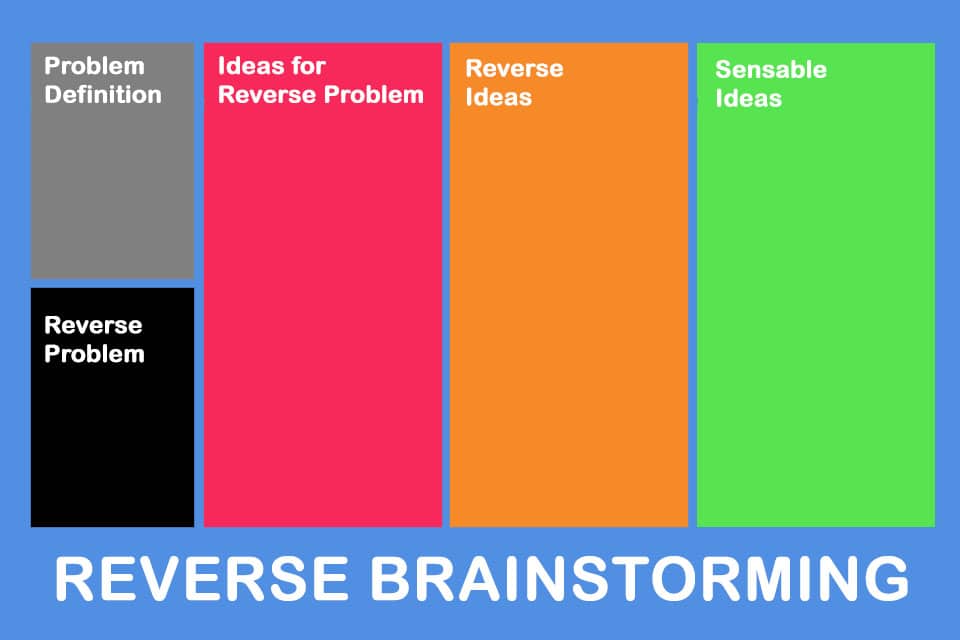What is Reverse Brainstorming?
Smartpedia: Reverse Brainstorming is a creativity method that reverses a problem and derives positive ideas from the causes.
Reverse Brainstorming – turning problems around to develop ideas from them
Brainstorming is a creativity technique in which a group of people work together to try to solve a task by collecting and developing ideas. However, participants do not always succeed in coming up with good ideas quickly. This is where another method can help: Reverse Brainstorming.
Reverse Brainstorming is a structured method of ideation that focuses first on the problems with an issue, in a project or in product development, before thinking in terms of solutions. “How can we make the problem worse?” takes the place of “How can we solve the problem?”. This is a reversal of classical brainstorming and is accordingly also called “negative brainstorming”. Following the collection of possibilities to make the problem worse, a new reversal takes place: ideas are derived from the findings that prevent the problem from getting worse.
The process of Reverse Brainstorming
The Reverse Brainstorming process usually consists of five steps:
- Naming the issue or problem for which one or more ideas are to be found.
- Reverse the problem and thus reverse the classical procedure. For example, “How can we reduce costs?” becomes “How can we increase costs?”.
- Collecting causes or ideas that reinforce or address the reversed problem. Example: “We start programming before we have clarified the system context and discussed the system architecture”.
- Reversal of the collected ideas. Example: “Before we start programming, we clarify the system context and agree on a suitable system architecture”.
- Evaluation of the most useful ideas for solving the originally named problem.
The process in Reverse Brainstorming begins and ends like the classic format, but the inner steps are reversed from the usual process. It is important that all ideas that address the inverted problem are accepted, no matter how likely or unlikely they may be. The evaluation of the ideas takes place at the very end of the process.
When is Reverse Brainstorming useful?
There are some situations in which the use of Reverse Brainstorming makes particular sense:
- The participants cannot find any good ideas for a problem or topic.
- The ideas mentioned are well known. In other words, there is a lack of new ideas.
- The participants are looking for ideas that lie outside a usual framework of thinking.
- The classic process of brainstorming lacks some structure.
- Participants lack the enthusiasm for a classical exchange.
- Problems are not openly addressed, although many participants are aware of the challenges.
A prerequisite for Reverse Brainstorming is that participants understand what real problems are in the context of the topic, recognising why the ideas for the reversed problem are negative and what the positive opposite could look like.
Impulse to discuss
Are there any areas, problems or issues where Reverse Brainstorming will not work?
Notes:
Simple tools such as a whiteboard, pinboard or blackboard and sticky notes are sufficient to conduct a Reverse Brainstorming. The use of A4 sheets with columns for ideas for the reverse problem, reverse ideas and solutions or sensible ideas can also be found in practice.
In terms of content, the procedure is similar to a premortem as it is known from project management.
Here you can find a video about Reverse Brainstorming.
Here you can find the Brainstorming Guide as a free download.
If you like the article or would like to discuss it, please feel free to share it in your network. And if you have any comments, please do not hesitate to send us a message.
And here you will find additional information from the t2informatik Blog:



